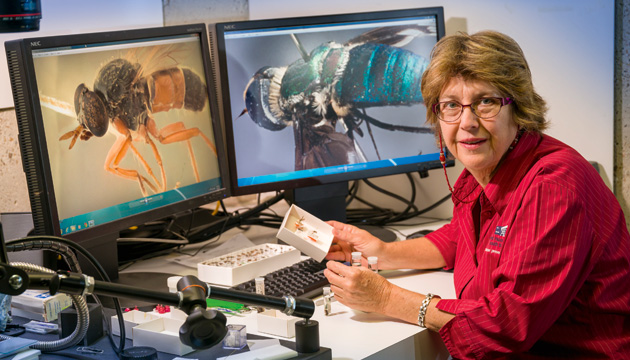Australia’s flies are a persistent but potentially useful mob.
Story by Amanda Burdon
They have given us our great Aussie salute, spawned the unforgettable cork hat and inspired some of our best-loved expressions. Flies have buzzed and bitten their way into our nation’s psyche. Chances are you are swatting one away right now!
Energetic (“like a blue-arsed fly”), enterprising (“no flies on their back”) and ever-present (“a fly on the wall”), these widespread and well-travelled insects have even been blamed for our unique Australian drawl. Tight-lipped speech sure limits your chances of swallowing one.
Dutch explorer William Dampier was possibly the first European to document our pesky bush flies, but explorer Ernest Giles, writing in 1876, captured them most eloquently:
The flies at the camp today were, if possible, even more numerous than before. They infest the whole air; ... we can’t help eating, drinking, and breathing flies; they go down our throats in spite of our teeth, and we wear them all over our bodies; they creep up one’s clothes and die, and others go after them to see what they die of.
Think flies and you probably think immediately of the bush fly or its larger, clumsier cousin, the blowfly. Introduced to Australia with the first sheep, the blowie soon made itself at home and multiplied. Today, it remains one of our sheep industry’s biggest health and welfare issues, costing producers an estimated $280 million each year through fly strike.
Advances in chemical treatments and sheep breech management and genetics have made significant inroads in the management of flystrike, butAustralian Wool Innovation’s Geoff Lindon says the recent mapping of the blowfly’s genome (including 2950 unique genes) holds great promise.
“We hope it will enable us to target new chemicals and develop new vaccines that trigger an immune response in sheep when fly larvae begin to attack,” says the program manager of productivity and animal welfare. “The blowfly is certainly one tough customer and it will be a problem for the foreseeable future because it can live in all sorts of conditions.”
The Australian bush fly is equally well-adapted to life on our continent. Populations exploded following the introduction of cattle. With the average beast producing 12 x 2-litre pats a day, and each of these “fly nurseries” supporting up to 1200 babies, the sky was the limit.
Although bush fly populations continue to rise and fall in response to rainfall, temperature and subsequent pasture growth, numbers generally decline in southern Australia during the cooler and wetter months. But they quickly recover in spring and early summer, when flies that have over-wintered in the warmer north and drier inland hitch a ride south on the prevailing warm north and north-easterly winds, sometimes travelling hundreds of kilometres a day.
This story excerpt is from Issue #109
Outback Magazine: Oct/Nov 2016










